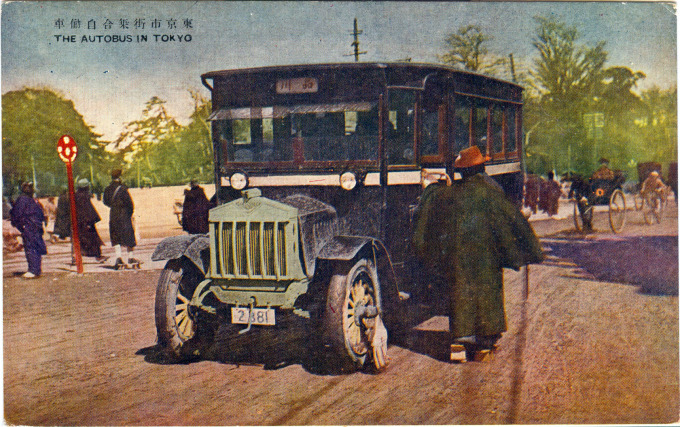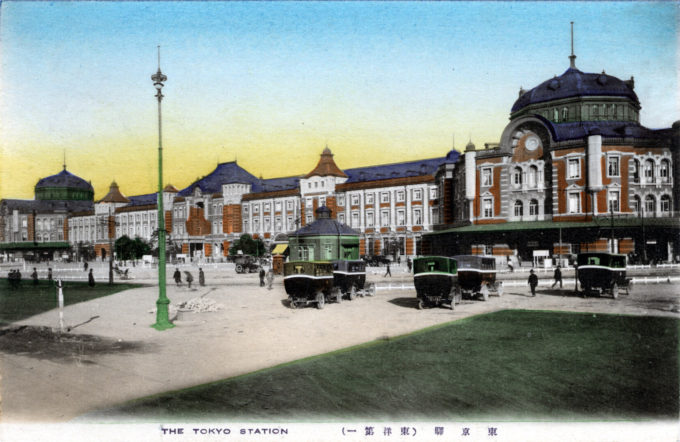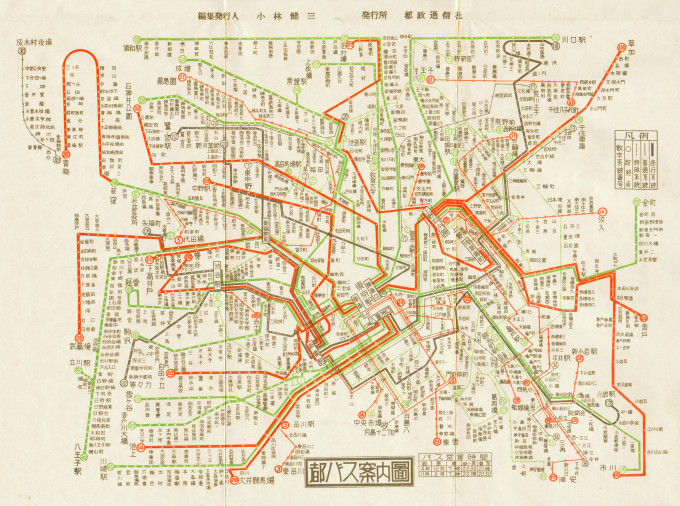See also:
Tokyo Streetcars (Toden), c. 1910-1920
“Tokyo had wide roads. To be sure, [many] were not yet paved but they were wide and convenient for automobile traffic. On his trip to Tokyo to design the Imperial Hotel, Frank Lloyd Wright waxed effusively about Tokyo’s wide boulevards: ‘Teeming, enormous area is fascinating Yedo. A vast city channeled with wide bare-earth streets swarming with humanity their indeterminable length.’
“Tokyo’s ecology contributed to its being an innovator in bus transport in other ways. The great Kanto earthquake of 1923 had torn up miles of [train] track, rendering them useless … Bus routes could be changed relatively easily; train [and stretcar] routes could not. Earthquakes were less likely to knock out bus service. And, in event of emergency, one could not rely upon slow-moving jinrikisha and niguruma [cart wagons]. A similar logic applied to using trucks for transport of freight.”
– Japanese Industrial History: Technology, Urbanization, and Economic Growth, Carl Mosk, 2001
Like the city’s train systems, the Tokyo bus network was comprised of both government and private lines. Privately-owned Tokyo Motorbus Co. begin its operations in 1918, using imported Ford Model TT buses. Six additional private bus companies began servicing routes in Tokyo in 1919. Following the 1923 earthquake, Tokyo Denki Kyoku, operator of the city streetcars, became the first municipal bus company in Tokyo.





Pingback: Tokyo Streetcars (Tokyo Toden), c. 1910-1920. | Old Tokyo
Pingback: Nippon Ford Assembly Plant, Yokohama, c. 1930. | Old TokyoOld Tokyo